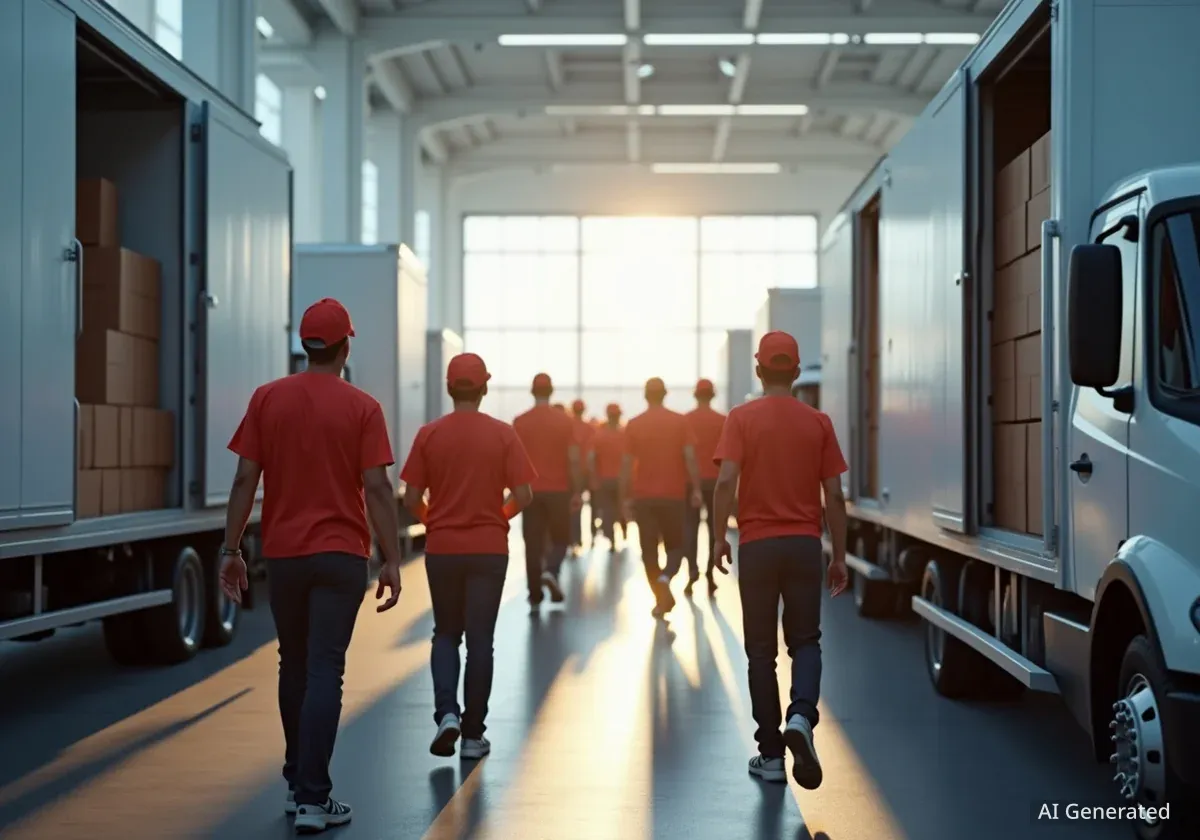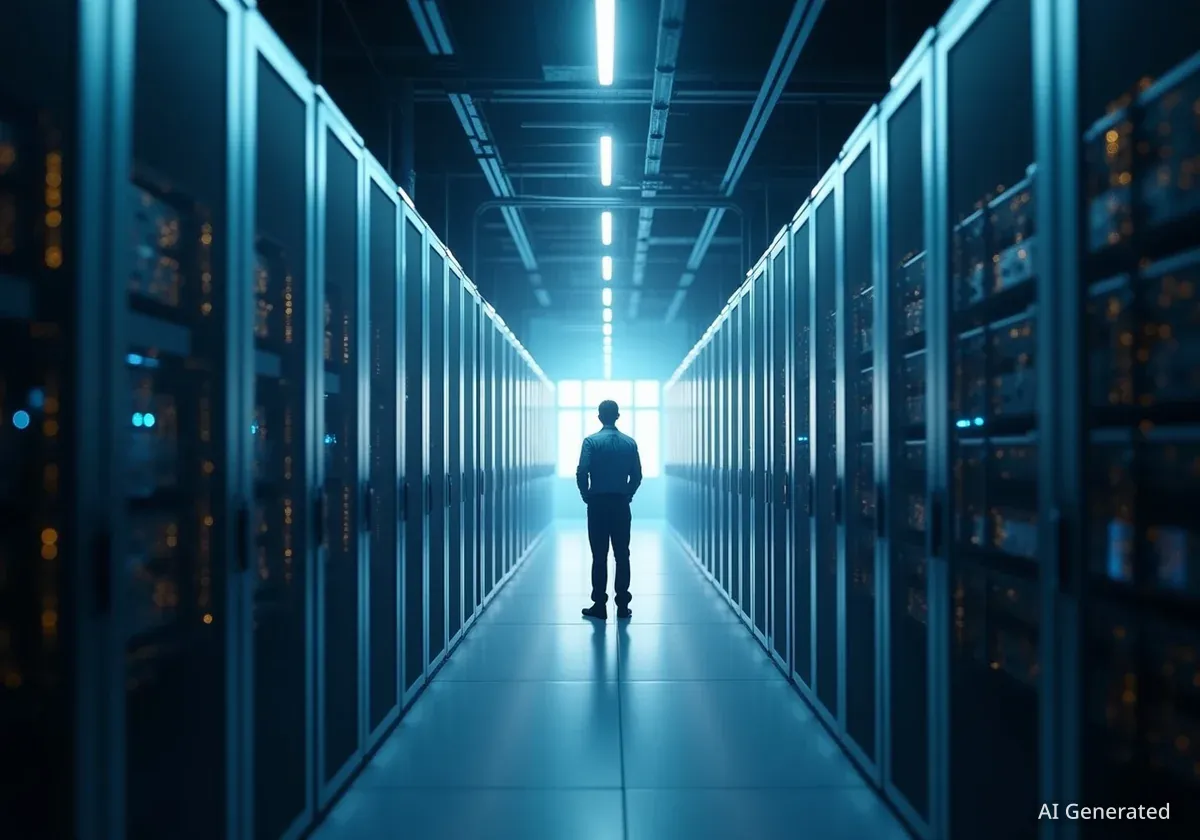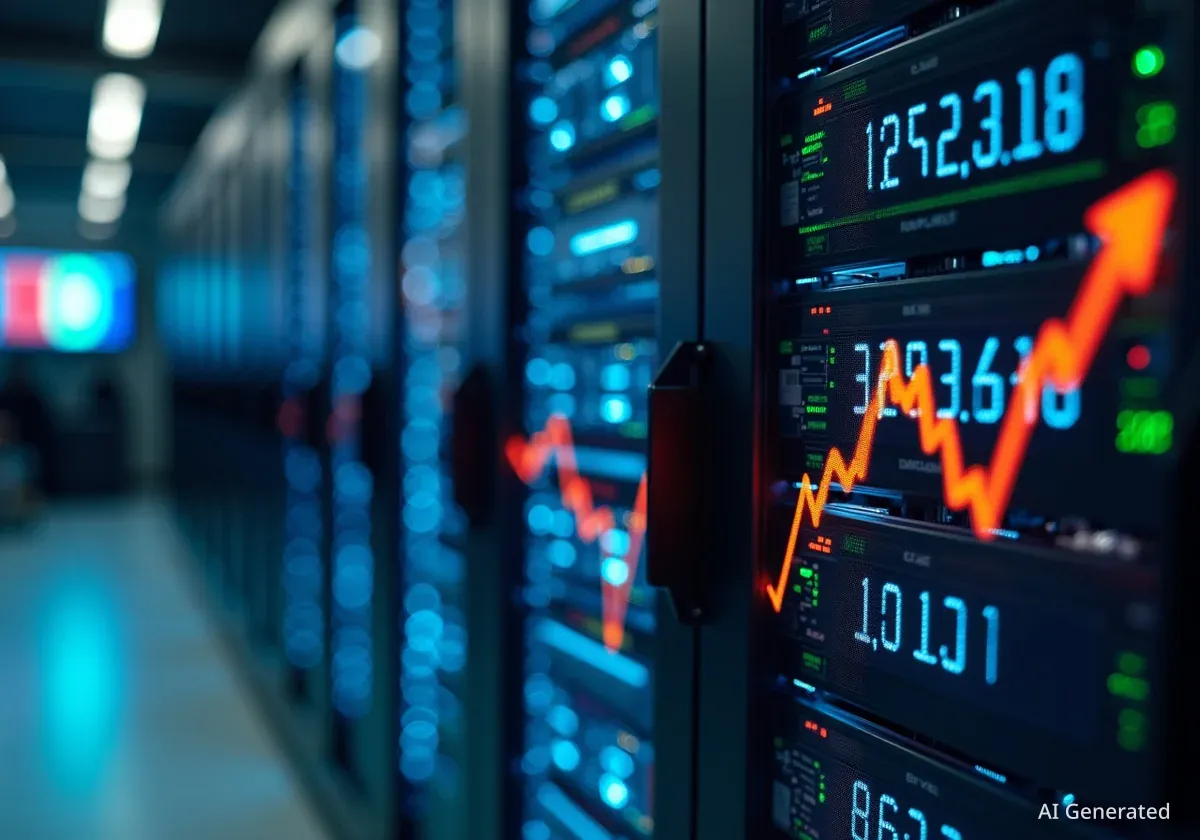A massive surge in spending on artificial intelligence infrastructure is driving record demand for technology components and boosting related stocks. However, some market analysts are now questioning the sustainability of this rapid expansion, drawing parallels to past technology bubbles and raising concerns about potential overinvestment.
Key Takeaways
- Demand for data center hardware, such as hard drives from Seagate and Western Digital, has created wait times of nearly a year.
- Capital investment by major tech companies in AI is projected to reach $500 billion by 2027, growing at a rate of 30% annually.
- Analysts are divided, with some warning of a potential bubble similar to the dot-com era, while others point to strong corporate cash flows and rising AI service revenues.
- The boom is creating ripple effects, driving investment in ancillary sectors like nuclear energy to meet the massive power demands of new data centers.
Hardware Demand Reaches Unprecedented Levels
The race to build out AI capabilities has triggered a voracious appetite for data center components. Companies like Seagate and Western Digital, which manufacture high-capacity hard drives, are experiencing demand that far outstrips their current supply. According to Benchmark Equity Research, customers now face wait times of nearly a year for these essential storage devices.
This supply-demand imbalance has allowed both companies to increase prices, leading to significant gains in profits and stock value. Over the past three years, the share prices for both Western Digital and Seagate have increased by more than 300%. This marks a dramatic turnaround for an industry segment that was recently considered a low-growth area of the technology sector.
By the Numbers
Benchmark Equity Research predicts further upside, suggesting Seagate's stock, currently trading at 21 times projected earnings, could reach 24 times next year's estimates due to its technological advantages.
Capital Spending Accelerates Sharply
The driving force behind this hardware demand is the massive capital expenditure by "hyperscalers"—the largest cloud computing and technology firms. These companies are building data centers on a scale never seen before to power generative AI services. Yearly capital investments are projected to compound at 30% and reach $500 billion by 2027.
The urgency of this buildout was highlighted by OpenAI founder Sam Altman, who noted earlier this year that the company's graphics processing units (GPUs) were "melting" from the high demand for its ChatGPT image generation services. This illustrates the immediate need for more processing power and infrastructure.
Ripple Effects Across Industries
The AI boom's impact extends far beyond traditional tech hardware. The immense energy requirements of these new data centers are forcing a reevaluation of power generation. A BofA Securities strategist noted that an estimated $3 trillion in new spending on nuclear power will be needed through 2050 to supply AI with sufficient electricity. This is accelerating development in next-generation nuclear technologies, including small modular reactors and fusion energy.
Other sectors benefiting from the data center construction spree include industrial machinery and air conditioning, as facilities the size of football stadiums require extensive physical infrastructure.
Concerns of an Investment Bubble Emerge
Despite the positive indicators, some financial experts are expressing caution. Hedge fund manager David Einhorn recently warned that AI companies may be spending too much, too quickly. This has sparked comparisons to the dot-com bubble of the late 1990s, when telecommunications companies invested heavily in laying "dark fiber"—broadband capacity that greatly exceeded immediate demand, leading to a market collapse.
The concern is that a similar dynamic could be at play today. If companies are double-ordering components due to long wait times, it could create an artificial sense of demand, leading to a future supply glut and a sharp downturn. With the S&P 500 trading at 25 times earnings, a significant portion of the market's value is tied to the continued growth of AI leaders.
Historical Parallel: The DeepSeek Scare
A more recent event provides another point of comparison. In January, a Chinese AI company called DeepSeek launched a free chatbot that performed surprisingly well despite being built with limited resources. This news caused a temporary shock, with Nvidia's stock falling 17% in a single day as investors worried that the high spending by U.S. firms was unnecessary. However, the broader market impact was limited, with the S&P 500 falling only 1.5%.
Counterarguments Point to Strong Fundamentals
Not all analysts share this pessimistic view. Barclays Capital argues that today's situation differs significantly from the dot-com era. The current wave of investment is largely being funded from the substantial cash flows of profitable hyperscale companies, not from debt. These firms also have enough remaining capital for large-scale stock buybacks.
Barclays strategists estimate that even a 20% decline in data center investment would result in only a 3% to 4% reduction in the S&P 500's consensus earnings per share for next year.
Furthermore, there is concrete evidence of strong user adoption and revenue growth for AI services. Microsoft has reported rapid growth in its AI service sales. Anthropic, an AI company with a strong enterprise focus, has seen its revenue run rate increase fivefold this year to $5 billion, indicating solid demand from business customers.
Scott Wren, senior global market strategist at Wells Fargo Investment Institute, maintains a positive outlook. He suggests investors who are waiting for a market dip should consider deploying capital now, recommending industrials and utilities as sectors with indirect exposure to the data center buildout.





